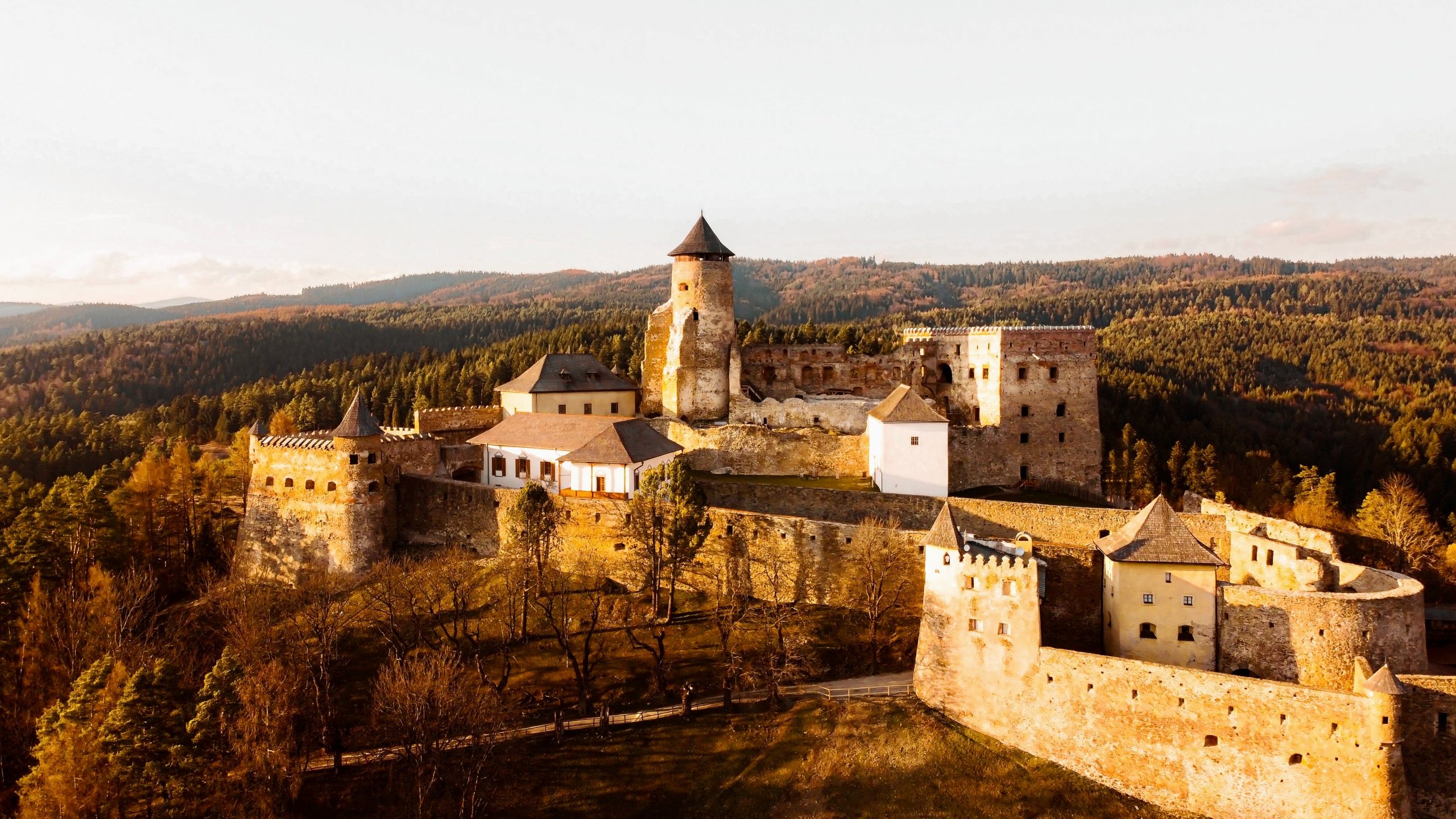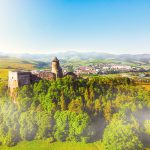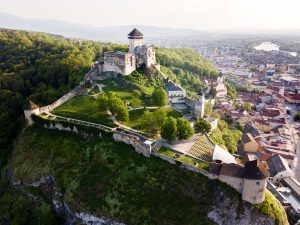
History
Slovakia is easily traversable by driving in a single day. The longest stretch from east to west is 428.8 kilometers, while the shortest is 77.6 kilometers. Slovakia has a total land area of 49 036 km2.
There are several cultural and historical landmarks in this very small area that refer to events that occurred in Slovakia over millennia.
Prehistoric Slovak area was populated. Several archaeological relics from this time period have been preserved and are housed in national history museums in several cities throughout Slovakia.
A prehistoric neanderthal skull cast from the prehistoric site of Gánovce is one of the most prized surviving antiquities. Prehistoric towns have been excavated in Smolenice, aka, Okov, and Nitriansky Hrádok; one of the Celtic settlements, Havránok, has been discovered near Liptovská Mara, among other places…
The territory of Slovakia served as the Roman Empire’s frontier area, or limes Romanus. The Romans launched three conquering battles on what is now Slovakian territory. After defeating the Marcomanns in 179, Roman troops commander Maximilianus Valerius engraved an inscription dedicated to the goddess of victory on a rock reef on which Trencin Castle was later erected.
 The territory of Slovakia served as the Roman Empire’s frontier are
The territory of Slovakia served as the Roman Empire’s frontier are
a, or limes Romanus. The Romans launched three conquering battles on what is now Slovakian territory. After defeating the Marcomanns in 179, Roman tro
ops commander Maximilianus Valerius engraved an inscription dedicated to the goddess of victory on a rock reef on which Trencin Castle was later erected.
 Raids and military incursions were common as a result of Slovakia’s geographical location in Central Europe. Throughout the centuries, the area of Slovakia has been threatened by military incursions from Rome, the Frankish Empire, the Tatars, and the Turks. Despite these concerns, Slovaks were able to maintain their historical and national identities.
Raids and military incursions were common as a result of Slovakia’s geographical location in Central Europe. Throughout the centuries, the area of Slovakia has been threatened by military incursions from Rome, the Frankish Empire, the Tatars, and the Turks. Despite these concerns, Slovaks were able to maintain their historical and national identities.
 A thriving Middle Ages in Slovakia (particularly from the 14th century) saw the construction and ongoing restoration of numerous noteworthy castles and cathedrals. During this time, the Slovak lands were administered by the Kingdom of Hungary, which was subsequently absorbed into the Habsburg Empire of Austria-Hungary.
A thriving Middle Ages in Slovakia (particularly from the 14th century) saw the construction and ongoing restoration of numerous noteworthy castles and cathedrals. During this time, the Slovak lands were administered by the Kingdom of Hungary, which was subsequently absorbed into the Habsburg Empire of Austria-Hungary.
With the communist regime seizing control of Czechoslovakia in 1948, the twentieth century saw significant changes in how Slovakia was administered, for better and for ill. Although there are still traces of this dictatorial era (which ended in a nonviolent Velvet revolution in 1989), Slovakia’s identity today is mostly that of a thriving new market economy.
Important historical events
- 7th century – Samo’s Empire Tribal Union
- 9th century – The creation of Great Moravia, the first state in Central Europe.
- 11th century – Hungarian state established in the 11th century, divided into Lower Hungary (Hungarians) and Upper Hungary (Slovaks)
- 16th century – After a defeat against the Turks at Mohá in the 16th century, Hungary became a province of Austria.
- 17th century – The Thirty Years’ War was filled with Turkish invasions and anti-Habsburg uprisings by the Hungarian nobles. Imre Tököly’s insurrection in 1687 was brutally suppressed and became known as the “Preov Abattoir.”
- 18th century – Slovak national renaissance, which began in the second half of the 18th century, was a period during which an independent Slovak nation was founded.
- 28/10/1918 – The Czechoslovak Republic, the combined state of Czechs and Slovaks, was established, as a result of Slovak national resurgence.
- 30/09/1938 – The Munich Agreement reflects the expansion of German fascism and the policy of concessions to it.
- 14/03/1939 – Czechoslovakia was dismembered. Slovakia became a Reich satellite state.
- 01/09/1939 – World War II began. On August 29, 1944, Slovak citizens voiced their opposition to the fascist Slovak regime at a national-liberation battle (SNP – Slovak National Uprising). The German military forces are using harsh retaliation to put a halt to the spontaneous opposition. Telgárt village, as well as Ostri Grun, Tokajik, and Zlatá Bana, were destroyed.
- 08/05/1945 – World War II ends. On February 25, 1948, a communist putsch known as “Victorious February” crushed Slovaks’ hopes for a democratic state.
- The Communist Party attempted to resurrect and restructure itself in 1968. Alexander Dubcek emerged as a pivotal figure. The audition for a human-faced socialism was forced to end on August 21, 1968, when armies from five socialist countries invaded Czechoslovakia.
- 1968 – For more than two decades, Soviet troops invaded Czechoslovakia.
- 17/11/1989 – Totalitarianism and communist tyranny ended.
- 01/01/1993 – The Czechs and Slovaks agreed to a peaceful state partition.
- 04/02/2004 – Slovakia joins NATO.
- 05/02/2004 – Slovakia joins the EU.
- 21/12/2007 – Slovakia joins the Schengen Area.
- 01/01/2009 – Slovakia joins the eurozone.

